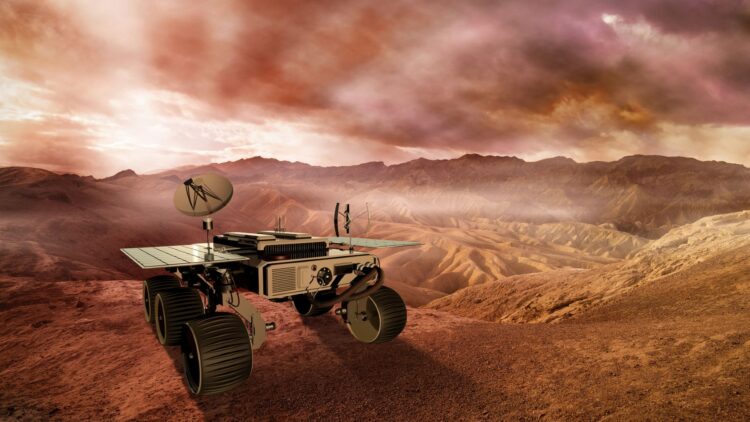NASA’s Perseverance rover has provided one of the most significant discoveries on the surface of Mars as it searches for signs of past microbial life. This discovery, if real, could change the way we look at life in the universe beyond planet Earth. Fragments of organic compounds and other interesting formations in Martian stones make people believe Mars can be a planet with life.
Perseverance rover’s significant discovery on Mars
Perseverance rover from NASA has recently drilled into a Martian rock known as Cheyava Falls and exposed three components that suggest past microbial life. First, the characteristic white veins of calcium sulfate mean that water has once gone through the rock.
Second, the rock has other organic compounds that make up the basic units of life as we know it. Third, it is dotted with tiny ‘leopard spots’ linked with microbial function on Earth. The results obtained, therefore, make Cheyava Falls more deserving of further investigation.
However, even these features, researchers state, do not guarantee the existence of life forms. The organic compounds and leopard spots could also originate from non-biological processes. To be sure of the discovered facts, the rock sample must be taken back to the Earth for further research. This step is critical to determine whether Perseverance has detected true biosignatures.
The discovery came at a time when NASA was grappling with many issues and had encountered some major setbacks in the recent past. This possibility of life on Mars is a much-needed shot in the arm for the agency and reminds everyone of the need for further exploration of the red planet.
The importance of organic compounds and water on Mars
Identifying organic compounds in the rock sample from the Cheyava Falls area is particularly important. Carbon compounds with hydrogen, called organic molecules, are regarded as the only basis for life on the planet.
These compounds are primarily made from fossils of prehistoric living organisms on Earth. Nonetheless, they can also be synthesized by non-biological processes, which are the main focus of this paper. The presence of these molecules on Mars suggests that similar processes may have been going on on this planet.
Besides organic compounds, calcium sulfate veins in the rock indicate that liquid water existed on Mars. As any living thing requires water, the presence of water in the planet’s history also raises the probability of microbial life on Mars. The veins at Cheyava Falls are the same as veins in sedimentary rocks on Earth that can be filled with chemical remains of microorganisms.
The mixing of organic compounds and the discovery of water on the Cheyava Falls rock make the site a promising area of interest. A more detailed study of the rock should reveal additional information on the existence of Martians and the history of life on the Red Planet.
Challenges and future steps in confirming Martian life
However, the results affirm that life exists on Mars, which is challenging to prove. After months of sending commands to the Perseverance rover, scientists are now unable to extract more information about the Cheyava Falls rock on Mars.
For more conclusive results, the rock sample must be returned to Earth for analysis by some of the best equipment. This process will include a sample retrieval program that will cost many billions of dollars, making it a technical and financially challenging operation.
NASA’s current strategies include contracting out firms to find economical and efficient ways to collect samples. This approach is designed to get around the problems of limited funds and complications of the technical nature. If so, the samples taken by Perseverance may offer an incredible opportunity to evaluate the possibility of living on Mars.
Indeed, identifying possible biosignatures in the rock of the Cheyava Falls is a significant achievement, but it is just the starting point. Much has to be done to and with the samples to exclude all the non-biological factors and be sure that one deals with traces of life from the distant past. This will be achieved after endorsing the relevant international laws and incorporating advanced technological support.
NASA is finding signs that life may once have existed on Mars, which is a discovery that can change the world as we know it. The results presented are not definitive. However, they offer some tantalizing insights about life on other planets. The subsequent phases of this mission will be critical to answering whether life was ever present on Mars, and what this may mean for the hunting for life beyond our planet.

